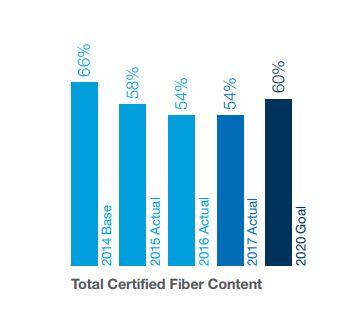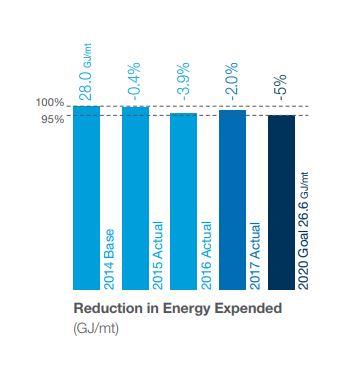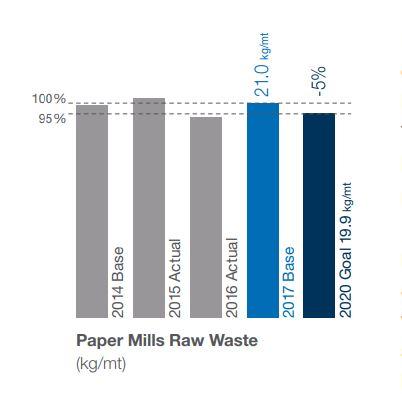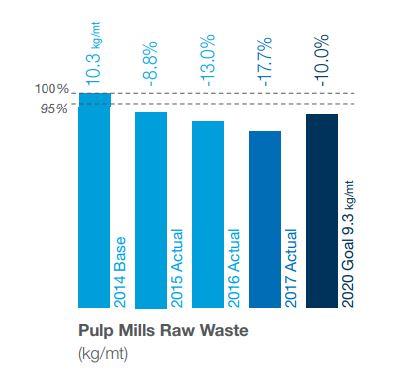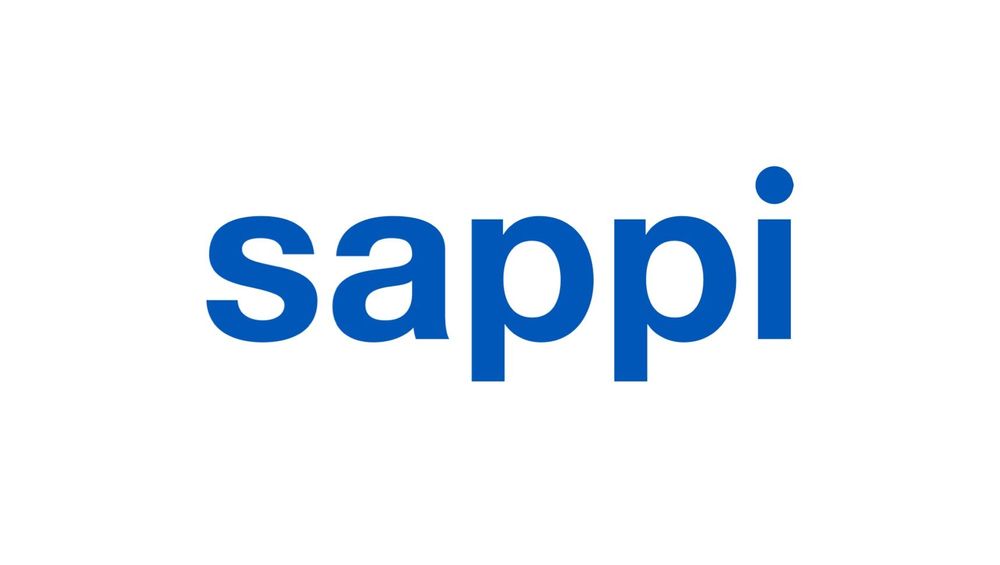Sappi Aims High With Sustainability Goals for Our Planet
At Sappi North America, we are committed to operating our businesses in a sustainable manner. Together with the 2020Vision— Sappi’s global growth strategy—we use our sustainability goals program to set targets, initiate improvement actions and monitor progress.
Achieve 60% Certified Fiber
Our certifi cation goal tracks the amount of certified fiber from wood and pulp across our three manufacturing operations.
Our 2014 base year achievement of 66 percent certified fiber reflects the mix impact of high levels of certified kraft pulp purchased for the Cloquet site after conversion of the pulp mill to make dissolving wood pulp (as well as kraft). Since then, as we swung to making more kraft pulp at Cloquet, certifi ed levels dropped. The current level of certifi ed fi ber of 54 percent also refl ects somewhat limited certifi ed wood located in economic hauling range to our two pulp mills.
Despite the variables, we’re committed to responsible sourcing. All of our wood fiber is sourced from well-managed forests and is thirdparty verified that it is from controlled and non-controversial sources.
These standards build on the strong legal framework within the US and offer additional assurances that there are no controversial sources in our wood basket.
Lower Total Energy Expenditure
Energy use and climate change remain top of mind for Sappi and our stakeholders. We’ve worked to control energy consumption, and continue to focus on this critical aspect of our operation.
Our goal is to reduce the total amount of energy expended per ton of product by 5 percent, as compared to the 2014 baseline. In 2017 we achieved a 2 percent reduction and are on track to reach this goal.
Each of our mills is equipped to use different fuel sources to help manage energy costs. With fuelswitching we can see trade-offs between emissions and effi ciency.
A 2017 increase in use of biomass, which is less efficient than natural gas, at both Westbrook and Somerset mills resulted in lower efficiency than the prior year; however, we saw significant improvements at Cloquet.
Reduce Raw Material Waste
Efficient use of raw materials improves front-end cost savings, reduces environmental impact and lowers costs associated with waste processing. To achieve these benefi ts and focus our data collection, we have separate goals for the pulping and papermaking process areas.
In our paper mills we’ve established a 5 percent reduction goal, whereas our pulp mills are targeting a 10 percent reduction in material losses (which we measure in mill process sewers before these streams enter our on-site treatment plants). At the beginning of 2017, we discovered a measurement error that impacted the historical paper mill losses, and we are therefore restating the baseline using the 2017 data.
The Cloquet Mill has achieved signifi cant improvements over the past several years, and we aim to improve across all three mills and achieve a 5 percent reduction by 2020.
We continue to make year-over-year reductions in the pulp mill losses despite having exceeded our original target. This year the mills have reduced losses even further, achieving a total reduction of 17.7 percent over the 2014 baseline.
Read more from Sappi North America's 2017 Sustainability Report here: http://bit.ly/Sappi-SR17

